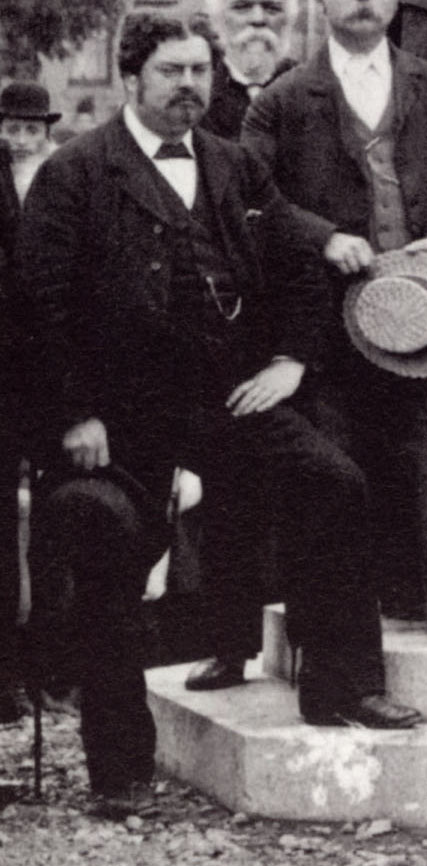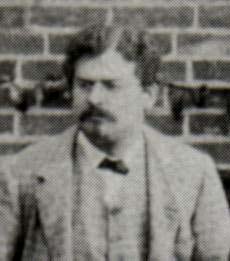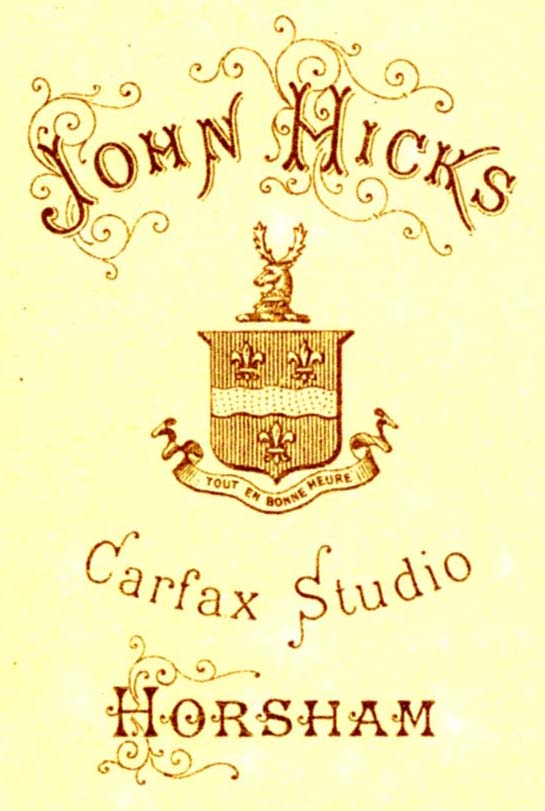Edgar Gael was born "Edgar Gale" in Newbury, Berkshire, during the 1st Quarter of 1849, the eldest child of Fanny Carter and Robert Gale. Edgar's mother Fanny Carter (born c1828, Surrey) had married Robert Gale (born 1803, Salisbury, Wiltshire) in Newbury, Berkshire, in 1847. [The marriage of Robert Gale and Fanny Carter was registered in Newbury during the 4th Quarter of 1847]. Soon after Edgar's birth, Robert and Fanny Gale moved to the Marylebone district of London, where Edgar's brother and three sisters were born. Edgar had at least four siblings - Mercy Ann Gale (born 1850, Marylebone, London), Jane Gale (born c1856, Marylebone, London), Alice Gale (born 1858, Marylebone, London) and Robert Gale (born 1860, Marylebone, London).
Edgar Gael - Photographer in Bromley, Kent (1874-1879)
On 25th September 1869, twenty year old Edgar Gael married Sarah Ann Tupper (1847, Lamberhurst, Sussex/Kent) in Bromley, Kent. Edgar's twenty-one year old bride Sarah Ann Tupper was one of eight children born to Mary Ann and William Tupper, a plumber and painter of Lamberhurst. After the death of William Tupper in 1851, Mrs Mary Ann Tupper and her children had moved away from Lamberhurst and settled in the Bromley area of Kent. It appears that after Edgar Gael married Sarah Ann Tupper in Bromley in 1869, he joined up with one of Sarah Ann's brothers to run a picture framing business in Bromley's High Street. By 1874, the firm of Gael & Tupper were engaged in the manufacture of picture frames at a shop at 31 Market Square, Bromley and premises at numbers 45 & 130 High Street, Bromley.
Edgar Gael, who had trained as a photographer and had joined the South London Photographic Society in 1874, established photographic portrait studios at his business premises in Bromley. The Bromley Directory for 1874 lists the firm of Gael & Tupper as "Photographers and Picture Frame Manufacturers" at 31 Market Square and at 45 & 130 High Street, Bromley. By 1875, Edgar Gael was the sole proprietor of the studios in Bromley's Market Square and High Street. The Bromley Directory, published by Edward Strong & Sons in 1875, featured an advertisement for "Edgar Gael, Photographer" at 130 High Street and 31 Market Square, Bromley.( The two addresses seem to correspond to two entrances to a single studio). The publicity printed on the carte-de-visite portraits produced by Edgar Gael at his Bromley studios during the 1870s describe him as an "Art Photographer, Portrait Painter, and Enlarger" and gives the location of his "Art Studio" as "Opposite Town Hall, Bromley, Kent" and at "The Post Office" in Bromley's High Street.
 The Bromley Directory of 1875 |
 The photographer Edgar Gael listed at 130 High Street (left) and 31 Market Square (above) in the 1875 edition of The Bromley Directory, published by E. Strong & Sons. |
During his stay in Bromley during the 1870s, Edgar Gael fathered four sons, but only two survived infancy. Edgar Tupper Gael was born in Bromley in 1872, but the boy died, aged 4, during the Fourth Quarter of 1876. Edgar and Sarah Ann's second son, Clive Ronald Gael was born in Bromley during the 2nd Quarter of 1874. A third son, Ethelbert Lewis Gael arrived early in 1876, but sadly died before the year was out. Stuart Malcolm Gael was born in Bromley during the 3rd Quarter of 1877 and, like his older brother Clive, survived into adulthood and eventually joined Edgar Gael in his photography business.
Around 1880, Edgar Gael, his wife Sarah Ann, and their two surviving sons Clive and Stuart, travelled down to Falmouth in Cornwall, where Edgar hoped to continue his photographic career.

|
[ABOVE] An 1863 map showing the centre of Bromley, the town in Kent where Edgar Gael was married and where he worked as a photographer in the 1870s. Edgar Gael operated photographic studio in a building at 31 Market Square which overlooked the Market Place. Edgar Gael also publicized hisstudio at the Post Office in Bromley's High Street, the main street which runs diagonally across the map. |

|
[ABOVE] Publicity printed on the reverse of a carte-de-visite portrait produced at Edgar Gael's "Art Studio" in Bromley, Kent, giving the location of his business as "The Post Office, Bromley, Kent". Other cartes give the location of Gael's studio in Bromley as "opposite Town Hall" (See further examples below) |



































































